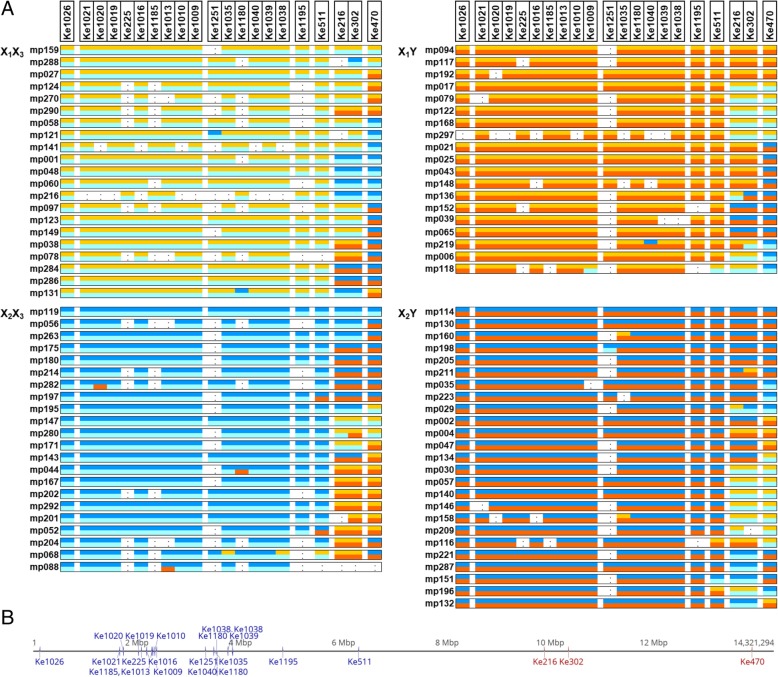Fig. 2.
a Microsatellite markers were ordered by their position along Actinidia chinensis var. chinensis ‘Hongyang’ chromosome 25. For 87 members of the mapping population III (CK51_05 x CK15_02) [20], the chromosome of origin of each allele is shown (X1 (yellow), X2 (dark blue), X3 (light blue) or Y1 (red) or undetermined (.) and these are grouped by chromosome pairings. This was a consequence of using informative microsatellite markers, e.g. for fully informative marker Ke511 the parental alleles were a(217)b(205) and c(215)d(219) giving a(217)c(215) and b(205)c(215) female progenies and a(217)d(219) and b(205)d(215) male progenies, where the four alleles were detected as length differences in base pairs of amplified fragments during capillary electrophoresis b The marker positions on chromosome 25 of the ‘Hongyang’ genome are shown, with non-segregating markers in blue and segregating markers in red

